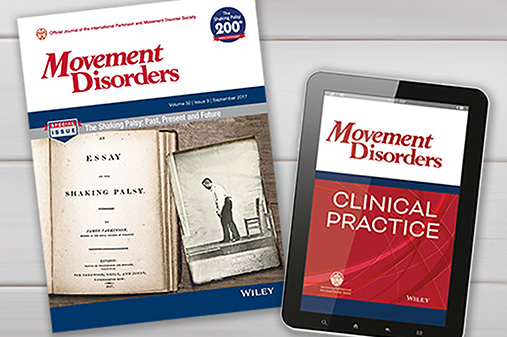 VOLUME 28, ISSUE 4 • DECEMBER 2024. Full issue »
VOLUME 28, ISSUE 4 • DECEMBER 2024. Full issue »

Summary of “The role of levodopa challenge in predicting the outcome of subthalamic deep brain stimulation”
From the beginning of trials on subthalamic DBS, investigators observed a correlation between the reduction of the UPDRS during levodopa challenge and reduction due to STN-DBS at short time follow-up. From these correlations, a predictive ability of the levodopa challenge for the STN-DBS outcome was inferred1. While this belief has already been challenged by a monocentric study in 2010, it has never been the subject of further investigation.2
On a database of 429 STN-DBS cases with follow-up examinations (mean ± standard deviation: 9.15 months ± 3.39) from our three centers, we re-investigated the relationship between the levodopa challenge and STN-DBS outcome.3
We examined predictive regression and classification models. An insufficient DBS outcome was defined as an overall UPDRS-III reduction <33% compared to preoperative UPDRS III/med-off scores. For classification models, a successful outcome was defined if the minimal clinically important change of 5 points on the UPDRS III was reached.
Whilst the absolute UPDRS III score reduction during levodopa challenge and due to DBS correlated highly (r=0.58), the reduction in relative terms showed a less distinct correlation (r=0.22). Regarding the prediction of STN-DBS outcomes, none of our fitted models could achieve sufficient results. Accuracy remained low and prediction intervals were too large to be clinically reliable (up to 30 points on the UPDRS III scale). We identified the preoperative UPDRS III score as the most influential variable in our models, and not the levodopa-response.
Independent confirmation of these results was presented on the 2024 MDS International Congress with a further monocentric cohort.4
Our data from a large tricentric cohort do not suggest that levodopa challenge should be abandoned, but they do cast doubt on the reliability of this measure alone. A limitation of our study is that the data are underpowered with respect to formal levodopa non-responders, as they were mostly excluded from DBS treatment. Individuals who received STN-DBS despite a formally inadequate levodopa response had indications such as levodopa-resistant tremor or severe motor fluctuations.
The practice of selecting DBS candidates using levodopa challenge alongside experienced clinicians' clinical judgement was generally successful. Our finding that the levodopa challenge is an insufficient predictor for the STN-DBS outcome is a prime example of the challenge to operationalize the multi-dimensional clinical selection of DBS candidates with single objective measures. In the future, more holistic approaches integrating different clinical scores, neuroimaging, and neurophysiology expanding beyond the prediction of (MDS-) UPDRS III are needed. Particularly, personalized target symptoms need to be addressed more explicitly.
![]() Listen to the podcast interview
Listen to the podcast interview
References
1. Charles PD, Van Blercom N, Krack P, Lee SL, Xie J, Besson G, et al. Predictors of effective bilateral subthalamic nucleus stimulation for PD. Neurology. 2002;59(6):932–4.
2. Zaidel A, Bergman H, Ritov Y, Md ZI. Levodopa and subthalamic deep brain stimulation responses are not congruent. Movement Disorders. 2010;25(14):2379–86.
3. Wolke R, Becktepe JS, Paschen S, Helmers A-K, Kübler-Weller D, Youn J, et al. The Role of Levodopa Challenge in Predicting the Outcome of Subthalamic Deep Brain Stimulation. Movement Disorders Clinical Practice. 2023;10(8):1181–91.
4. Younce J, Norris S, Perlmutter J. Levodopa response is an inadequate and often biased correlate of STN-DBS outcomes [abstract]. Mov Disord [Internet]. 2024;39 (suppl 1). https://www.mdsabstracts.org/abstract/levodopa-response-is-an-inadequate-and-often-biased-correlate-of-stn-dbs-outcomes/
Read more Moving Along:






